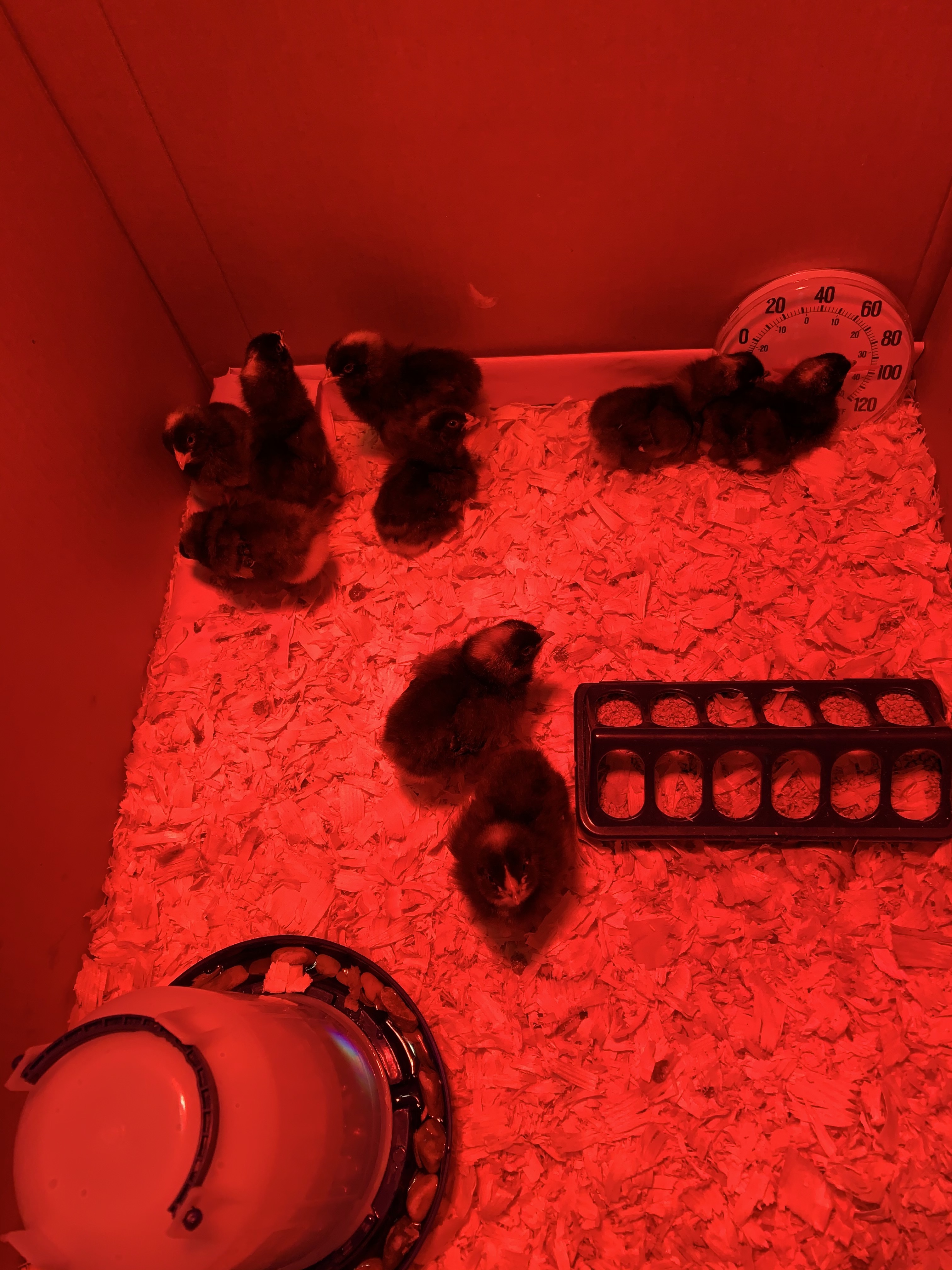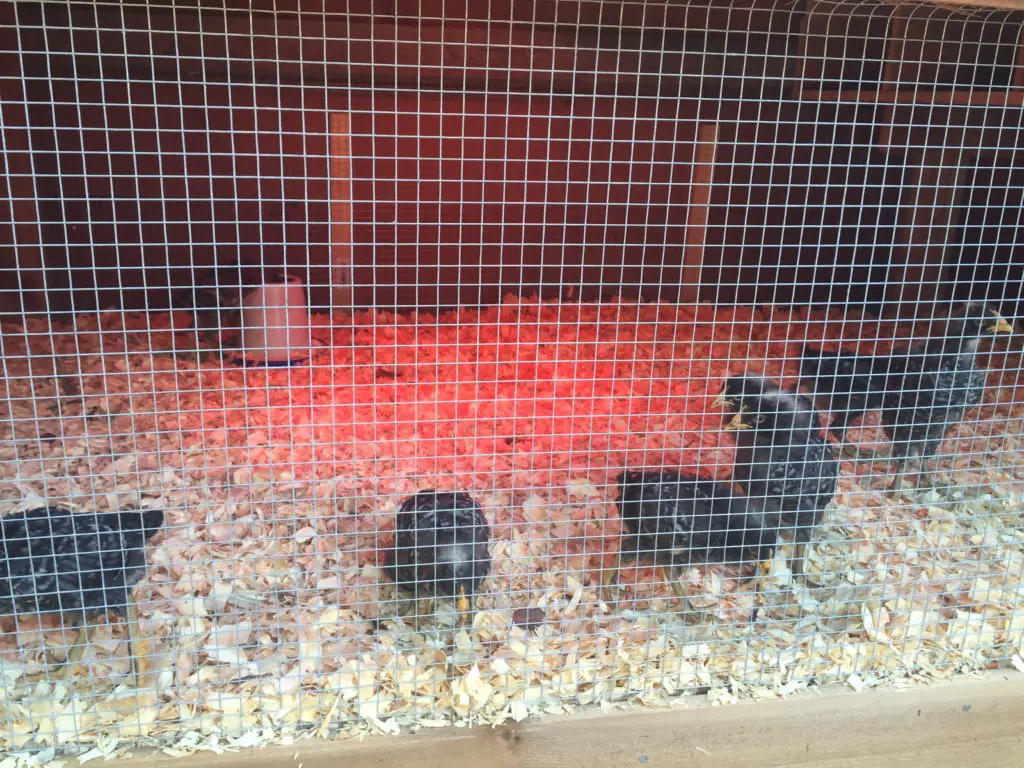This is a common question that people new to keeping chickens often ask. The short answer is: it depends.
Moving chicks from a brooder to outside is dependent on their ability to maintain body heat, not specifically a certain age. This will vary depending on the climate where you live and what time of year your chicks hatch. Moving chicks outside can happen anywhere from 3 to 6 weeks based on these factors.
In this post, I provide the key details to know about transitioning your chicks from the brooder to the coop and tips on how to make the move more successful.
Preparing Your Chicks for Life Outside
There are a couple of things that must be accomplished before your chicks are ready for life outside.
First, your chicks need to be slowly acclimated to the outside temperature while they are still in the brooder so they will not have a shock to their system when they are moved outside.
Second, they need to be fully feathered so they can keep themselves warm without the need for auxiliary heat.

Temperature Requirements of the Brooder
To prepare your chicks for life outside the brooder, they need to slowly be acclimated to the ambient temperature outside. This will prevent them from getting shocked by weather that is too hot or too cold.
Basically, you will start with a temperature between 90 and 95 degrees F in the brooder. Each week you will lower the temperature by 5 degrees F, until you reach the temperature outside. This is usually accomplished within a few weeks.
When your chicks are first hatched, they are not able to keep themselves warm enough to survive on their own, which is why they need you to care for them so much in those initial first few weeks.
In the “wild,” Momma Chicken would sit on her clutch of chicks to keep them warm until they were able to venture out. This was when the down feathers of the chicks were fully replaced with flight feathers, anywhere from 3 weeks onward.
When you don’t have a broody hen to keep the chicks warm you need to provide auxiliary heat to the brooder instead. You can use a heat lamp, which is what we did, or a heat plate.
Regardless of how you decide to heat the brooder, you will need to ensure that it’s the correct temperature inside the brooder for your chicks.
There are 2 ways to measure the temperature inside the brooder:
- Thermometer
- Chick behavior
Measuring Brooder Temperature: Thermometer
To measure the temperature of the brooder with a thermometer, place the thermometer near the bottom of the brooder where your chicks will be. It’s important that you are measuring the temperature of the brooder and not the temperature of the room!
We used a plain thermometer like this one.
There are also thermometers that are specifically made for measuring temperature for chicks and have markings on them to make it easy to know what the temperature should be at each week after hatching, like this one.

Measuring Brooder Temperature: Chick Behavior
The other way to measure the temperature of the brooder is by observing the chicks’ behavior.
Chicks that are too hot will act lethargic, laying on the ground, and generally not up and moving. If you have a heat lamp shining in a corner of the brooder and it’s too hot, the chicks will move as far away from that corner as possible. Overheated chicks will have digestive problems; either diarrhea or sticky, dry poop that sticks to their butt feathers.
Chicks that are too cold will congregate together, often piling on top of each other. This is dangerous because it can lead to suffocation. Cold chicks will also chirp loudly and frantically.
Chicks that are at a comfortable temperature will walk around the brooder, happily eating and drinking. They will lay down to sleep by themselves, sometimes with their necks outstretched. However, some chicks will still like to cuddle even at a comfortable temperature, just make sure that they are not blocking each other’s faces from being able to breath.
Typical Age of Fully Feathered
Once the chicks have most of their down feathers replaced by flight feathers, they are mature enough to go outside from the brooder. At this point, their feathers will be able to keep them warm enough to survive without supplemental heat.
Chickens start to grow flight feathers starting at about 1 week after hatching. By about 2 weeks, a chicken will have all their wing feathers (and still waiting on the tail feathers to come in). Around 3 weeks, most chickens will have tail feathers.
If you live in a cooler climate, your chicks are likely to grow their flight feathers sooner than if you lived in a warm climate. This design of chickens ensures they are warm enough to survive sooner in life in the cold. Before humans started raising chickens alongside us, chickens survived in cold climates by quickly growing flight feathers to protect them from the elements.
Also, if your chicks hatch during the winter or early spring, they are likely to grow flight feathers sooner than if they hatch in the late spring or early summer for the same reason.
I live in Texas and my Plymouth Rock chicks that were born in May started growing their wing flight feathers about a week after hatching. By 3 weeks, they were fully feathered and this is when we moved them outside.
Making the Move Outside
Typically, chicks will stay in a brooder for at least the first 3 weeks of life. After that point, they can better regulate their body temperature and can transition outside to a coop.
We had the heating lamp in the coop for a few days at night to make sure the chicks did not get too cold. Once they learned how to use the roosting bars in the coop and could be cuddled together at night to keep warm, we removed the heat lamp.
When you first move your chicks to the coop, make sure to keep them in the coop for several days before letting them out so they can learn that this is their new home.
Our Plymouth Rock chicks stayed in the coop for about 3 days straight before we opened the door to let them roam in the backyard during the day (this was before we had a run).

Keep in mind that they will go back to the coop as it starts to get dark. If it’s not dark enough for the chicks, they will not go back to the coop! We learned this the hard way after chasing the tiny birds through the yard to try to catch them and put them up for the night!
We now know that the chickens will put themselves to sleep when they’re ready at night and we just need to work with their schedule. Once everyone is in the coop, we go outside to close the door and that’s it–no more running around the yard trying to catch chickens!
In summary, chicks can be moved outside starting at 3 weeks as long as they are able to maintain their body heat.
For further reading, check out 4 Reasons Why Spring is the Best Time of Year to Get Chickens.

